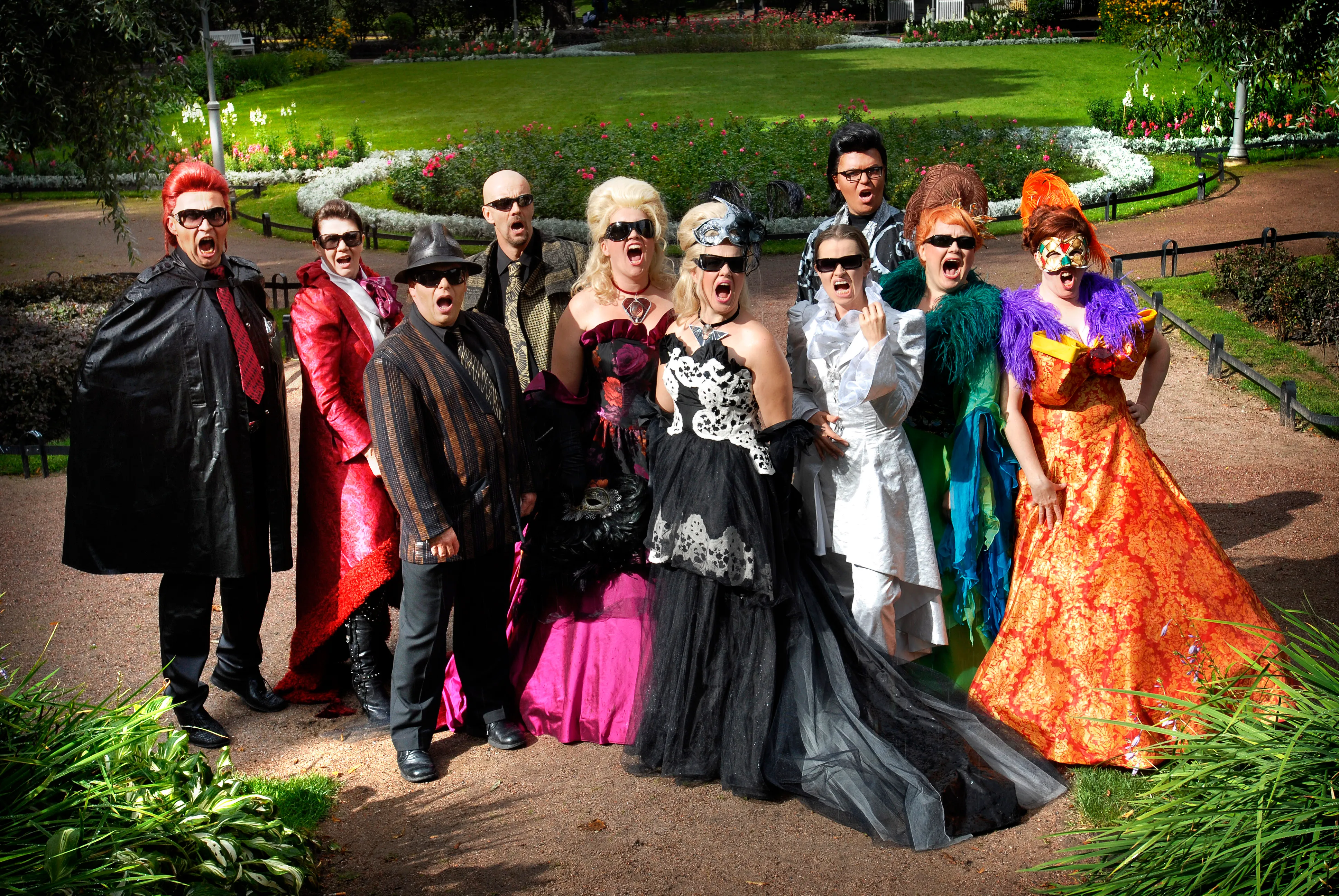Avant-Garde and “Folk” Opera
Tapio Tuomela jumped the gun on this year’s Finnish opera boom with his work Äidit ja Tyttäret (“Mothers and Daughters”), which was premiered at the Finnish National Opera in November 1999. Tuomela’s work is based on the national epic Kalevala and, in terms of its choice of themes, belongs to the genre “fur cap opera.” Its musical idiom and thematic development are however modernistic.
Ilkka Kuusisto, known for his Muumiooppera (“Moomin Opera”), starts off the premieres of the year 2000 in January in Helsinki. Sticking to national subject matter, he tells about the Finnish author and poet Aino Kallas in the monologue opera Nainen kuin jäätynyt shampanja (“A Woman Like Chilled Champagne”).
The young Juha T. Koskinen continues with his courageous, experimental style together with the small avant-garde ensemble, Ooppera Skaala. The newest fruit of their collaboration is the chamber opera EUKKO – pidättekö vainajista (“OLD WOMAN – Are You Fond of Dead People?”), which is based on the Russian writer Daniil Harms’ short story “The Old Woman.” The work will be premiered during the contemporary music festival Musica Nova in Helsinki in November.
Tuomo Teirilä’s opera Pyymosa will be heard for the first time in May in the city of Vantaa. The Ilmajoki Music Festival has produced “all-Finnish” folk opera for decades and continues along the same lines in the summer of 2000. Atso Almila’s Isontaloon Antti (“Mansion Antti”) will be premiered in June. The work’s libretto is by Antti Tuuri and tells about one of the knife ruffians that used to be typical for northwestern Finland. In addition, Pentti Tynkkynen’s opera about the Finnish national poet Runeberg will get its premiere in the town of Saarijärvi at the end of July.
Three Composers, One Night
A total of 15 premieres is planned, but there are even more composers. In July, the Savonlinna Opera Festival will stage a unique experiment that it has commissioned, a collaboration between three composers called Aika ja uni (“The Age of Dreams”). Kalevi Aho, Olli Kortekangas, and Herman Rechberger will each compose one part of the work trilogy based on a text by Paavo Rintala.
August is an active period on the opera front with the art form also spreading to other venues besides the traditional opera houses. Tuomas Kantelinen’s Paavo Suuri. Suuri juoksu. Suuri uni (“Paavo the Great. A Great Race. A Great Dream”) about the legendary runner Paavo Nurmi will be presented at the Helsinki Olympic stadium. The large-scale production is a collaboration of the Helsinki City Theatre and the Helsinki 2000 Foundation. The libretto is by Paavo Haavikko, and the role of Nurmi will be played by the young Finnish-Swedish baritone Gabriel Suovanen.
Saariaho’s First Opera
Kaija Saariaho lives in Paris and belongs to the elite of contemporary composers. Her first opera, the five-act L’amour de loin (“Love from Afar”) will be staged at the Salzburg Music Festival in August. The work is a joint commission from the festival and the Parisian Châtelet theatre, and it will also be performed in Paris in the near future. The French-Lebanese writer Amin Maalouf prepared the libretto on the basis of Jaufré Rudel’s poem about a 12th-century troubadour. The main role is acted by Saariaho’s trusty, the US-American soprano Dawn Upshaw, and the opera is in the hands of the cult director Peter Sellars and the conductor Kent Nagano.
The Ooppera Skaala has been commissioned to present another work in Helsinki in August, Kimmo Hakola’s Marsin mestarilaulajat (“The Mastersingers Meistersingers of Mars”), which is based on Matti Hagelberg’s comic strip figures. Also in August will be premiered Harri Ahmas’ Sydänvirrat (“Heart Streams”) and Eero Erkkilä’s Kalastaja (“The Fisherman”), the latter in the context of the church music festival in the town of Lohtaja.
One of the most anticipated climaxes of the opera season is based on Shakespeare’s classic by the same name, King Lear, and is the sixth opera by Aulis Sallinen, known for his Horseman, Red Line, and Kullervo. The work’s September premiere will open the autumn season at the Finnish National Opera, which commissioned the work. The bass Matti Salminen will play the role of King Lear.
In the city of Turku, the stage will shift from the theatre to the cathedral, where Mikko Heiniö’s opera Riddaren och draken (“The Knight and the Dragon”) will be premiered in November. The libretto by Bo Carpelan is in Swedish. In December, Kirmo Lintinen’s Ihmisäänen ihmemaassa (“In the Wonderland of the Human Voice”), the only children’s opera among the premieres, as well as Kari Tikka’s Luther can be heard in the Finnish National Opera.
Nor does the boom seem to be ending with the year 2000. Tapani Länsiö is planning the opera Sulka (“The Feather”), based on a text by Paavo Haavikko, for the beginning of 2001. Esa-Pekka Salonen is better known as a conductor, but the already once cancelled premiere of Nainen ja apina (“The Woman and the Monkey”) is being eagerly looked forward to. Where and when the work will be seen is nevertheless still an open question.
Translation: Ekhart Georgi
Photo: Sakari Viika
From Finnish Music Quarterly magazine 1/2000
Please note that the texts are protected by the copyright laws. They are free for background use, but when referring to these texts or articles, please mention the author and FMQ magazine.


